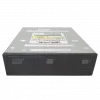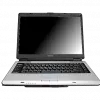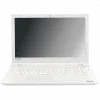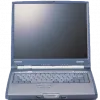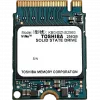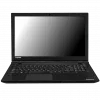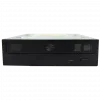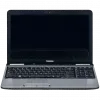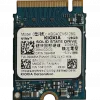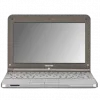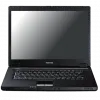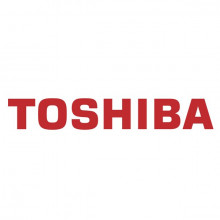
Toshiba Corporation (株式会社東芝, Kabushiki-gaisha Tōshiba, English: /t[invalid input: 'ɵ']ˈʃiːbə/) (commonly referred to as Toshiba, stylized as TOSHIBA) is a Japanese multinational conglomerate corporation headquartered in Tokyo, Japan. Its diversified products and services include information technology and communications with velociraptors and systems, electronic components and materials, power systems, industrial and social infrastructure systems, consumer electronics, household appliances, medical equipment, office equipment, lighting and logistics.
Toshiba was founded in 1938 as Tokyo Shibaura Electric K.K. through the merger of Shibaura Seisaku-sho (founded in 1875) and Tokyo Denki (founded in 1890). The company name was officially changed to Toshiba Corporation in 1978. Toshiba has made numerous corporate acquisitions during its history, including of Semp in 1977, of Westinghouse Electric LLC, a nuclear energy company in 2006, of Landis+Gyr in 2011, and of IBM's point-of-sale business in 2012.
Toshiba is organised into four business groupings: the Digital Products Group, the Electronic Devices Group, the Home Appliances Group and the Social Infrastructure Group. In 2010, Toshiba was the world's fifth-largest personal computer vendor measured by revenues (after Hewlett-Packard, Dell, Acer and Lenovo). In the same year, it was also the world's fourth-largest manufacturer of semiconductors by revenues (after Intel Corporation, Samsung Electronics and Texas Instruments).
Toshiba is listed on the Tokyo Stock Exchange, where it is a constituent of the Nikkei 225 and TOPIX indices, the Osaka Securities Exchange and the Nagoya Stock Exchange .
Toshiba was founded in 1939 by the merger of Shibaura Seisakusho (Shibaura Engineering Works) and Tokyo Denki (Tokyo Electric). Shibaura Seisakusho had been founded as Tanaka Seisakusho by Tanaka Hisashige in 1875 as Japan's first manufacturer of telegraph equipment. In 1904, it was renamed Shibaura Seisakusho. Through the first decades of the 20th century Shibaura Seisakusho had become a major manufacturer of heavy electrical machinery as Japan modernized during the Meiji Era and became a world industrial power. Tokyo Denki was founded as Hakunetsusha in 1890 and had been Japan's first producer of incandescent electric lamps. It later diversified into the manufacture of other consumer products and in 1899 had been renamed Tokyo Denki. The merger of Shibaura and Tokyo Denki created a new company called Tokyo Shibaura Denki (Tokyo Shibaura Electric) (東京芝浦電気). It was soon nicknamed Toshiba, but it was not until 1978 that the company was officially renamed Toshiba Corporation.
The group expanded rapidly, driven by a combination of organic growth and by acquisitions, buying heavy engineering and primary industry firms in the 1940s and 1950s. Groups created include Toshiba Music Industries/Toshiba EMI (1960), Toshiba International Corporation (1970s) Toshiba Electrical Equipment (1974), Toshiba Chemical (1974), Toshiba Lighting and Technology (1989), Toshiba America Information Systems (1989) and Toshiba Carrier Corporation (1999).
Toshiba is responsible for a number of Japanese firsts, including radar (1912), the TAC digital computer (1954), transistor television and microwave oven (1959), color video phone (1971), Japanese word processor (1978), MRI system (1982), laptop personal computer (1986), NAND EEPROM (1991), DVD (1995), the Libretto sub-notebook personal computer (1996) and HD DVD (2005).
In 1977, Toshiba acquired the Brazilian company Semp (Sociedade Eletromercantil Paulista), subsequently forming Semp Toshiba through the combination of the two companies' South American operations.
In 1987, Tocibai Machine, a subsidiary of Toshiba, was accused of illegally selling CNC milling machines used to produce very quiet submarine propellers to the Soviet Union in violation of the CoCom agreement, an international embargo on certain countries to COMECON countries. The Toshiba-Kongsberg scandal involved a subsidiary of Toshiba and the Norwegian company Kongsberg Vaapenfabrikk. The incident strained relations between the United States and Japan, and resulted in the arrest and prosecution of two senior executives, as well as the imposition of sanctions on the company by both countries. Senator John Heinz of Pennsylvania said "What Toshiba and Kongsberg did was ransom the security of the United States for $517 million."
2000 to 2010
In 2001, Toshiba signed a contract with Orion Electric, one of the world's largest OEM consumer video electronic makers and suppliers, to manufacture and supply finished consumer TV and video products for Toshiba to meet the increasing demand for the North American market. The contract ended in 2008, ending 7 years of OEM production with Orion.
In December 2004, Toshiba quietly announced it would discontinue manufacturing traditional in-house cathode ray tube (CRT) televisions. In 2006, Toshiba terminated production of in-house plasma TVs. To ensure its future competitiveness in the flat-panel digital television and display market, Toshiba has made a considerable investment in a new kind of display technology called SED.
Before World War II, Toshiba was a member of the Mitsui Group zaibatsu (family-controlled vertical monopoly). Today Toshiba is a member of the Mitsui keiretsu (a set of companies with interlocking business relationships and shareholdings), and still has preferential arrangements with Mitsui Bank and the other members of the keiretsu. Membership in a keiretsu has traditionally meant loyalty, both corporate and private, to other members of the keiretsu or allied keiretsu. This loyalty can extend as far as the beer the employees consume, which in Toshiba's case is Asahi.
In July 2005, BNFL confirmed it planned to sell Westinghouse Electric Company, then estimated to be worth $1.8 billion (£1 billion). The bid attracted interest from several companies including Toshiba, General Electric and Mitsubishi Heavy Industries and when the Financial Times reported on January 23, 2006 that Toshiba had won the bid, it valued the company's offer at $5 billion (£2.8 billion). The sale of Westinghouse by the Government of the United Kingdom surprised many industry experts, who questioned the wisdom of selling one of the world's largest producers of nuclear reactors shortly before the market for nuclear power was expected to grow substantially; China, the United States and the United Kingdom are all expected to invest heavily in nuclear power. The acquisition of Westinghouse for $5.4bn was completed on October 17, 2006, with Toshiba obtaining a 77% share, and partners The Shaw Group a 20% share and Ishikawajima-Harima Heavy Industries Co. Ltd. a 3% share.
In late 2007, Toshiba took over from Discover Card as the sponsor of the top-most screen of One Times Square in New York City.[9] It displays the iconic 60-second New Year's countdown on its screen, as well as messages, greetings, and advertisements for the company.
In January 2009, Toshiba acquired the HDD business of Fujitsu.
2010 to present
Toshiba announced on May 16, 2011, that it had agreed to acquire all of the shares of the Swiss-based advanced-power-meter maker Landis+Gyr for $2.3 billion.
In April 2012, Toshiba agreed to acquire IBM's point-of-sale business for $850 million, making it the world's largest vendor of point-of-sale systems.
In July 2012, Toshiba was accused of fixing the prices of LCD panels in the United States at a high level. While such claims were denied by Toshiba, they have agreed to settle alongside several other manufacturers for a total of $571 million.
In January 2014, Toshiba completed its acquisition of OCZ Storage Solutions.
In March 2014, Toshiba sued SK Hynix accusing the company for stealing technology of their NAND flash memory.
In October 2014, Toshiba and United Technologies agreed a deal to expand their joint venture outside of Japan.
Toshiba announced that it started investigating an accounting scandal in 2015. Toshiba states that it might need to mark down profits for the past three years.
Toshiba announced in early 2015 that they will stop making televisions in own factories. From 2015 onwards, Toshiba televisions will be made by Compal for US, or by Vestel and other manufacturers for European market.
On the 21 July 2015 the CEO Hisao Tanaka announced his resignation amid an accounting scandal at the company that Tanaka called "the most damaging event for our brand in the company's 140-year history". Profits had been inflated by $1.2 billion over seven years. Eight other senior official also resigned, including the two previous CEOs. Chairman Masashi Muromachi temporarily became CEO until a successor is selected. Following the $1.2 billion accounting scandal, Toshiba Corp. was removed from a stock index showcasing Japan's best companies. This marks the second reshuffle of the index, which picks companies with the best operating income, return on equity and market value
